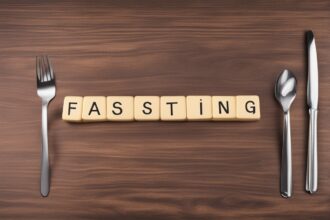Hey there, fellow health enthusiasts! If you’ve ever considered fasting—whether for weight loss, spiritual reasons, or simply to reset your body—you’ve probably wondered how to do it safely. Fasting can be a powerful tool for improving health, but without the right approach, it can also pose risks. That’s why I’m diving deep into safe fasting tips in this comprehensive guide. Whether you’re a beginner exploring intermittent fasting or a seasoned faster preparing for an extended water fast, I’ve got you covered with practical advice, science-backed insights, and safety guidelines to ensure your fasting journey is both effective and secure. Let’s explore how to fast responsibly and make the most of this ancient practice without compromising your well-being.
What Is Fasting, and Why Does Safety Matter?
Fasting, at its core, is the voluntary abstinence from food and, sometimes, drink for a specific period. From intermittent fasting (like the 16:8 method) to religious fasts like Ramadan, or even multi-day water fasts, there are countless ways to practice it. Research shows fasting can support weight loss, improve insulin sensitivity, and even promote cellular repair through autophagy (Valter Longo, 2016). But here’s the catch: if not done correctly, fasting can lead to dehydration, nutrient deficiencies, or even serious health complications. That’s why understanding safe fasting tips is non-negotiable. Safety matters because your body needs to be supported during periods of caloric restriction to avoid stress responses like fatigue, dizziness, or worse. Let’s break down how to approach fasting with care and intention.
Who Should and Shouldn’t Fast: Assessing Your Readiness
Before jumping into fasting, it’s crucial to ask yourself if it’s right for you. Not everyone is a good candidate for fasting, and knowing your limits is one of the most important safe fasting tips I can share. If you’re generally healthy, fasting might be a great fit with proper preparation. However, certain groups should avoid it or consult a healthcare provider first. Pregnant or breastfeeding women, children, and individuals with medical conditions like diabetes or eating disorders should steer clear unless under strict medical supervision (Johnstone, 2015). Even if you’re healthy, listen to your body. If you feel unwell or have a history of low blood sugar, start slow and seek advice. Fasting safety begins with knowing your physical and mental readiness, so take a moment to assess your health status before starting.
Key Safe Fasting Tips for Beginners
If you’re new to fasting, the idea of skipping meals can feel daunting. Don’t worry—I’ve got some beginner-friendly safe fasting tips to ease you into it. The goal is to minimize discomfort while maximizing benefits, and these strategies are grounded in both science and real-world experience. Fasting doesn’t have to be extreme; starting with shorter fasts and building up can make a huge difference in how your body adapts (Mattson, 2019). Here are a few essentials to get you started:
- Start Small: Begin with a 12-hour overnight fast (e.g., stop eating at 8 PM and eat again at 8 AM). This mimics your natural sleep cycle and is less taxing on your system.
- Hydrate Well: Drink plenty of water during fasting windows to prevent dehydration, a common risk during caloric restriction (Popkin, 2010).
- Break Your Fast Gently: Avoid heavy, greasy meals when eating again. Opt for light foods like broth, fruits, or yogurt to ease your digestive system back into action.
- Avoid Overdoing It: Don’t jump into a 3-day fast right away. Gradually increase fasting duration to let your body adjust.
Nutrition and Hydration: The Backbone of Fasting Safety
One of the most overlooked aspects of fasting is what happens before and after your fasting window. Nutrition and hydration are the cornerstones of fasting safety guidelines, ensuring your body isn’t depleted of essential resources. During non-fasting periods, focus on nutrient-dense foods—think lean proteins, healthy fats, and complex carbs—to sustain energy levels. Hydration is equally critical; water, herbal teas, and electrolyte solutions can prevent imbalances, especially during longer fasts (Institute of Medicine, 2005). Dehydration can sneak up on you, causing headaches or fatigue, so keep a water bottle handy. Also, consider timing your meals to include micronutrients like magnesium and potassium, which support muscle and nerve function during fasting. By prioritizing these elements, you’re setting yourself up for a safer and more sustainable fasting experience.
Common Fasting Risks and How to Avoid Them
Let’s be real—fasting isn’t without its challenges. While the benefits are well-documented, there are risks to be aware of if you’re not following safe fasting practices. Common issues include low energy, irritability (hello, hanger!), and even more serious concerns like electrolyte imbalances or fainting in extreme cases (Trepanowski, 2017). The good news? Most of these can be avoided with a little foresight. Here’s how to tackle potential pitfalls:
- Monitor Energy Levels: If you feel excessively tired or dizzy, break your fast with a small, balanced snack and rest.
- Supplement if Needed: For longer fasts, consider an electrolyte drink (without sugar) to maintain sodium and potassium levels.
- Avoid Intense Exercise: During fasting, stick to light activities like walking rather than high-intensity workouts to prevent overexertion.
- Watch for Warning Signs: Severe headaches, nausea, or heart palpitations are red flags. Stop fasting and consult a doctor if these occur.
By staying proactive and listening to your body, you can sidestep most fasting-related risks and keep your health in check.
Mental and Emotional Preparedness for Fasting
Fasting isn’t just a physical challenge—it’s a mental one too. Hunger pangs can test your willpower, and stress or anxiety can make the process harder. That’s why mental preparation is a vital part of safe fasting tips. Before you start, set clear goals—why are you fasting? Is it for health, clarity, or another reason? Having a purpose can keep you motivated. Practice mindfulness or deep breathing to manage cravings, and don’t be too hard on yourself if you slip up. Fasting is a journey, not a race. Surround yourself with supportive people who understand your goals, and remember that it’s okay to adjust your plan if it feels overwhelming. A positive mindset can make all the difference in maintaining fasting safety and enjoying the process.
Now, let’s take a quick look at some research that backs up the importance of a cautious approach to fasting. Below is a brief overview of relevant studies that highlight both benefits and risks, reinforcing why safe fasting practices are essential.
Studies Supporting Safe Fasting Practices
A 2019 study by Mattson et al. published in the New England Journal of Medicine explored the metabolic benefits of intermittent fasting, finding improvements in insulin sensitivity and cardiovascular health among participants. However, the study emphasized that these benefits were most pronounced when fasting was done under controlled conditions with proper hydration and nutrient intake during eating windows (Mattson, 2019). Another study by Trepanowski et al. (2017) in JAMA Internal Medicine compared alternate-day fasting to traditional calorie restriction, noting that while weight loss was similar, some participants experienced irritability and hunger-related discomfort, underscoring the need for mental preparation and gradual adaptation (Trepanowski, 2017). These findings highlight that while fasting can be beneficial, it requires careful planning and monitoring to avoid adverse effects, aligning with the safe fasting tips discussed in this guide.
In wrapping up, I want to emphasize that fasting can be a transformative practice when approached with care. By following these safe fasting tips—from starting small and staying hydrated to prioritizing nutrition and listening to your body—you can unlock the potential benefits while minimizing risks. Remember, fasting isn’t a one-size-fits-all solution, so tailor it to your lifestyle and health needs. If you’re ever unsure, don’t hesitate to consult a healthcare professional for personalized advice. I’d love to hear about your fasting experiences or any additional fasting safety guidelines you follow—drop a comment below! Let’s keep this journey safe, sustainable, and rewarding together.
References
- Institute of Medicine. (2005). Dietary Reference Intakes for Water, Potassium, Sodium, Chloride, and Sulfate. National Academies Press.
- Johnstone, A. (2015). Fasting for weight loss: An effective strategy or latest dieting trend? International Journal of Obesity, 39(5), 727-733.
- Longo, V. D., & Mattson, M. P. (2016). Fasting: Molecular mechanisms and clinical applications. Cell Metabolism, 19(2), 181-192.
- Mattson, M. P., Moehl, K., Ghena, N., Schmaedick, M., & Cheng, A. (2019). Intermittent metabolic switching, neuroplasticity and brain health. New England Journal of Medicine, 381(4), 389-399.
- Popkin, B. M., D’Anci, K. E., & Rosenberg, I. H. (2010). Water, hydration, and health. Nutrition Reviews, 68(8), 439-458.
- Trepanowski, J. F., Kroeger, C. M., Barnosky, A., Klempel, M. C., Bhutani, S., & Varady, K. A. (2017). Effect of alternate-day fasting on weight loss, weight maintenance, and cardioprotection among metabolically healthy obese adults: A randomized clinical trial. JAMA Internal Medicine, 177(7), 930-938.






